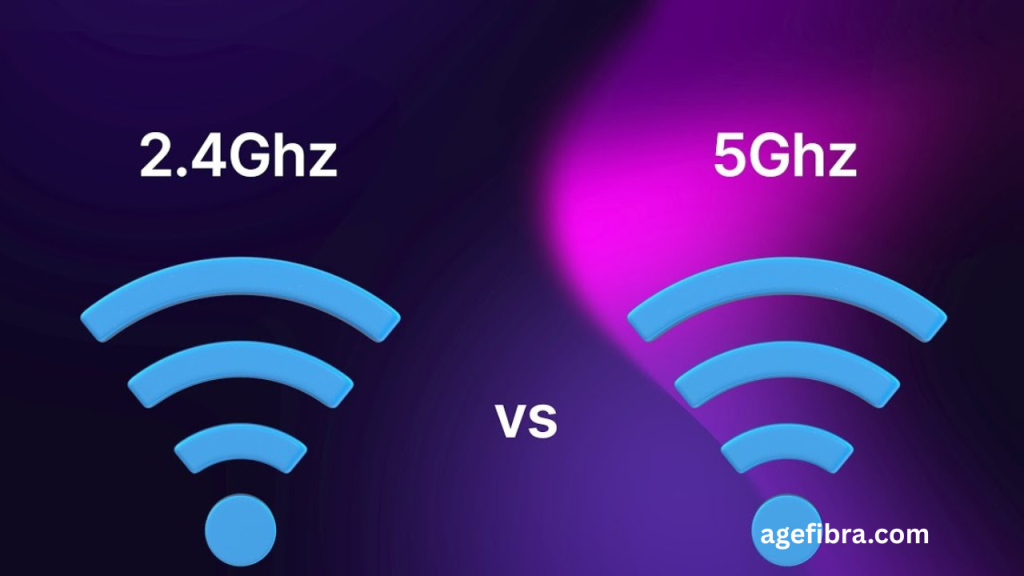Choosing the right Wi-Fi frequency band can make a big difference in your internet speed and reliability. Whether you’re gaming, streaming, working from home, or just casually browsing, understanding how these frequencies work helps you maximize your connection. The debate between 5GHz vs 2.4GHz Wi-Fi is more relevant than ever as devices and smart home gadgets multiply. Each frequency has its strengths and weaknesses, making it important to pick the right one based on your specific environment and needs.
The terms 5GHz and 2.4GHz refer to the two most commonly used radio bands for wireless networks. These bands dictate how fast data travels, how far the signal can reach, and how well it penetrates walls. Many modern routers offer dual-band or tri-band capabilities, allowing you to connect to either frequency. But most users don’t know when to switch or why one may be more reliable in certain scenarios. That’s why understanding the practical differences between 5GHz vs 2.4GHz Wi-Fi helps you make smarter decisions, reduce signal drops, and increase speed where it matters most.
Understanding Wi-Fi Frequency Bands
Wi-Fi uses radio waves to transmit data between your router and devices. These waves operate at different frequencies—measured in gigahertz (GHz)—and affect the performance, speed, and range of your wireless connection. 2.4GHz Wi-Fi has been around longer and is more commonly supported by older devices. In contrast, 5GHz Wi-Fi is newer and designed for higher-speed internet with reduced interference.
5GHz Wi-Fi: Fast But Short-Range
5GHz Wi-Fi delivers faster speeds due to its higher frequency, making it ideal for bandwidth-intensive activities like:
- Streaming 4K videos
- Online gaming
- Video conferencing
- Transferring large files
However, it has a shorter range and struggles to penetrate thick walls or multiple floors. It’s best used in open spaces or when you’re close to the router. If your devices are in the same room or nearby, 5GHz Wi-Fi often delivers smoother, more stable performance.
2.4GHz Wi-Fi: Long-Range But Slower
2.4GHz Wi-Fi operates at a lower frequency, allowing signals to travel further and better penetrate obstacles like walls and floors. It’s ideal for:
- Larger homes
- Outdoor areas
- Devices located far from the router
- IoT or smart home devices
While it offers more extensive coverage, 2.4GHz Wi-Fi is typically slower and more prone to interference, especially in crowded areas where many networks overlap.
Read More: How to Extend Wi-Fi Signal Without Buying a New Router
Key Differences Between 5GHz and 2.4GHz Wi-Fi
Speed
5GHz offers faster data transfer rates—ideal for high-bandwidth applications like Zoom meetings and Netflix streaming.
2.4GHz is slower but more than sufficient for browsing, emails, or smart devices.
Range
2.4GHz covers more ground, making it the better choice for long-distance or multi-floor coverage.
5GHz covers a smaller radius and is better for single-room or nearby usage.
Interference
2.4GHz is more congested because many household appliances (like microwaves and baby monitors) operate in this band.
5GHz has more available channels and less interference, leading to a cleaner connection.
Device Compatibility
Older devices often only support 2.4GHz.
Newer smartphones, laptops, and tablets usually support both.
Step-by-Step Guide: How to Choose the Right Band
Step 1: Check Your Device Compatibility
Look at your device’s specifications. If it supports dual-band Wi-Fi, you can connect to either 5GHz or 2.4GHz. Most newer devices do.
Step 2: Assess Your Home Layout
If your space has many walls or you’re far from the router, use 2.4GHz. If you’re in the same room or close by, 5GHz will offer better speeds.
Step 3: Identify Your Online Activities
Gaming, streaming, and video calls work better on 5GHz. For casual browsing or smart home automation, 2.4GHz is sufficient.
Step 4: Access Your Router Settings
Log in to your router and enable both frequency bands if supported. Set different SSIDs (network names) for 2.4GHz and 5GHz for easier management.
Step 5: Test and Switch
Connect to both networks at different distances and observe performance. Choose the one that delivers stable speed and fewer dropouts for your most-used devices.
Tips for Maximizing Your Wi-Fi Performance
Benefit from Dual-Band Routers
Using a dual-band router gives you access to both 2.4GHz and 5GHz frequencies. This flexibility allows different devices to connect to the band that best suits their performance needs, improving the overall network experience.
Differentiate Your Network Names
Assigning unique names (SSIDs) to your 2.4GHz and 5GHz networks helps you easily identify and manage connections. This practice ensures devices connect to the optimal band instead of randomly switching between them.
Keep Firmware Updated
Regularly updating your router’s firmware enhances performance, fixes bugs, and improves security. Manufacturers often release updates that optimize signal quality and device compatibility, especially for newer Wi-Fi standards.
Optimize Router Placement
Placing your router in a central, open area of your home—preferably elevated—helps distribute the signal more evenly. Avoid hiding it in corners or behind furniture, as obstructions reduce signal strength and range.
Expand Coverage with Extenders
If you experience weak signals or dead zones, consider installing Wi-Fi extenders or mesh systems. These devices expand your coverage area, allowing both 2.4GHz and 5GHz bands to reach distant or obstructed areas.
Common Mistakes to Avoid
Relying on a Single Frequency Band
Many users unknowingly stick to either 2.4GHz or 5GHz exclusively. This limits performance potential. Modern routers allow both bands to work simultaneously, which can dramatically improve efficiency and reliability.
Poor Router Placement
Positioning your router in enclosed or low spaces like cabinets or corners can severely limit signal strength. For best results, place it in a high, central spot free from obstructions.
Overlooking Signal Interference
2.4GHz networks often suffer from interference due to overlap with common household devices and neighboring networks. Ignoring this can cause slow speeds and dropouts. Choosing the right channel and using 5GHz when possible can help avoid interference.
Using Outdated Networking Equipment
Older routers may not support 5GHz or current performance-enhancing features like beamforming or MU-MIMO. Upgrading to a modern router ensures better compatibility, speed, and future-proofing.
Overloading a Single Network Band
Connecting all your devices to one frequency can lead to congestion and reduced performance. Distribute your devices intelligently—use 5GHz for high-speed activities and 2.4GHz for long-range or low-demand connections.
Real-Life Use Cases
Home Office Setup
For someone working from home with frequent Zoom calls and file uploads, 5GHz Wi-Fi ensures high-speed internet and lower latency. A router placed close to the workstation delivers optimal performance.
Smart Home Environment
In a smart home with sensors, cameras, and voice assistants, 2.4GHz Wi-Fi works better due to its extended range. These devices don’t need high speed but require stable, long-distance connectivity.
Gaming and Streaming Room
A dedicated gaming or home theater room benefits from 5GHz Wi-Fi. It supports real-time data transfer for lag-free gameplay and smooth video streaming.
Multi-Story House
A two-story house benefits from mixing both frequencies. Use 5GHz for upstairs bedrooms with extenders and 2.4GHz for downstairs living rooms or outdoor areas.
Frequently Asked Questions
Is 5GHz Wi-Fi faster than 2.4GHz?
Yes, 5GHz offers significantly faster speeds compared to 2.4GHz, especially for activities like streaming or gaming.
Can I use both 5GHz and 2.4GHz at the same time?
Yes, if you have a dual-band router, devices can connect to either frequency based on their location and needs.
Does 5GHz Wi-Fi have better range than 2.4GHz?
No, 5GHz has a shorter range and doesn’t penetrate walls as well as 2.4GHz.
Why does my device only see the 2.4GHz network?
Your device may not support 5GHz, or the router may not be broadcasting the 5GHz signal. Check settings and compatibility.
Should I separate my 2.4GHz and 5GHz networks?
Separating them helps manage which devices connect where. Give each a unique name for easier identification.
Is 2.4GHz Wi-Fi still good enough?
Yes, for tasks like browsing, checking email, and using smart devices, 2.4GHz works perfectly fine.
How do I switch between 5GHz and 2.4GHz Wi-Fi?
Go to your device’s Wi-Fi settings and manually connect to the network name associated with either 5GHz or 2.4GHz.
Conclusion
Choosing between 5GHz vs 2.4GHz Wi-Fi depends on your specific needs, space, and devices. For faster speeds in close range, 5GHz is ideal, while 2.4GHz provides better coverage over longer distances. Understanding their differences helps optimize your home network for smoother streaming, gaming, or smart device performance. Use both wisely for the best experience, and always ensure your router is properly placed and updated to get the most from your connection.


